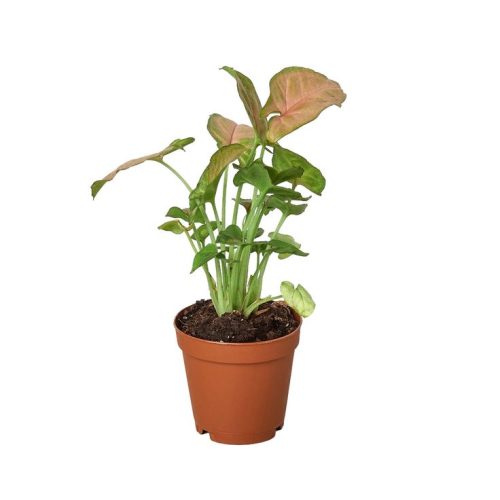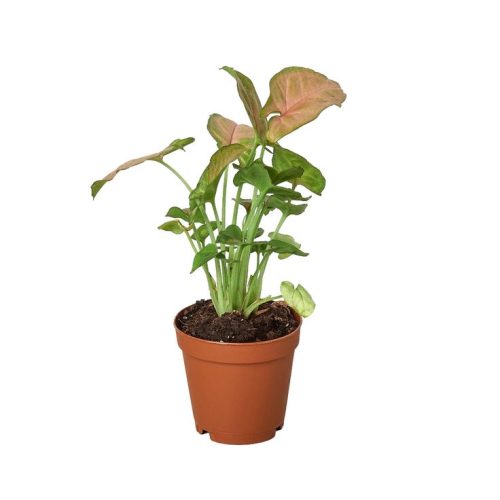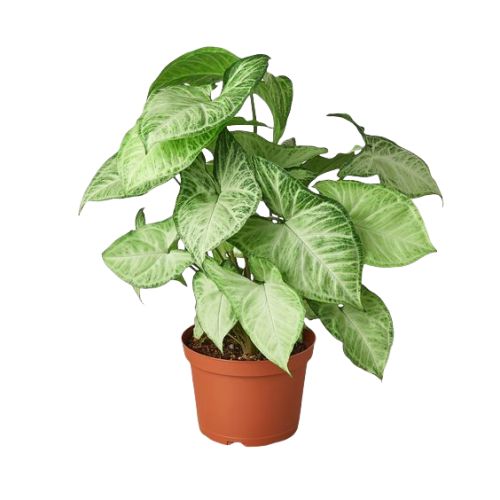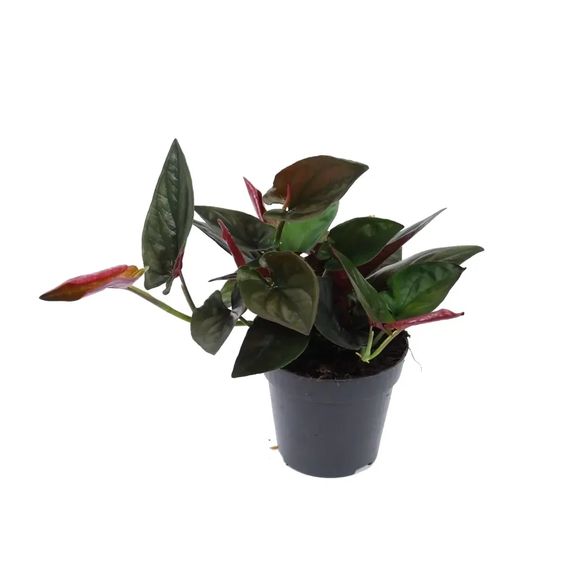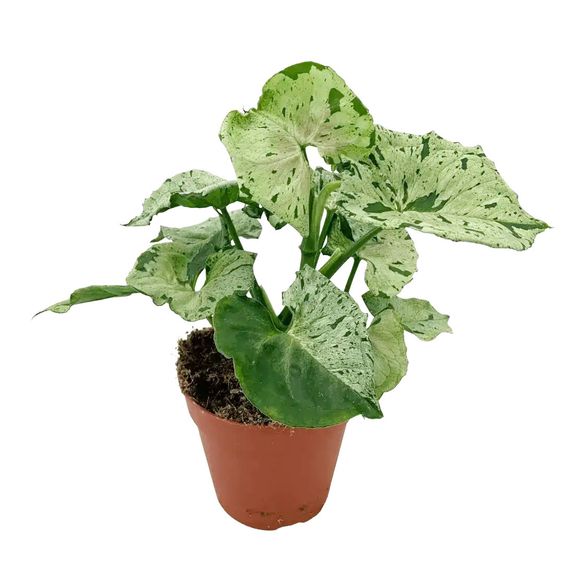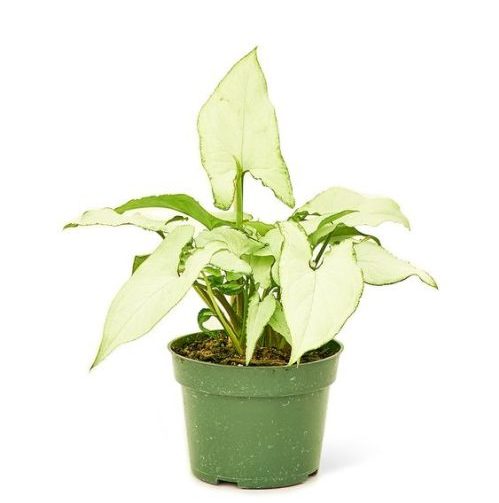Syngonium Red Arrow
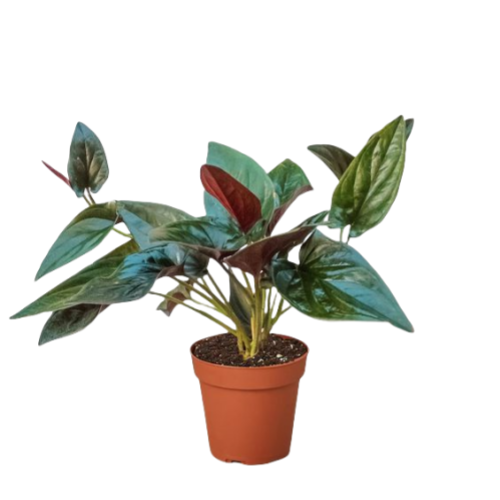
- Botanical Name: Syngonium erythrophyllum
- Family Name: Araceae
- Stems: 1-2 inches
- Temperature: 15°C-27°C
- Other: Climbing vine, likes shade and moisture
Overview
Product Description
The Tropical Elegance of Syngonium Red Arrow
Versatile Placement
This adaptable plant can thrive in various room settings of an office or home, as long as the conditions are suitable. It prefers bright, indirect light, making it an excellent choice for spaces that receive plenty of natural illumination without harsh direct sunlight。The Red Arrow Syngonium can also be grown in hanging baskets or trained on trellises or poles, allowing its natural climbing habit to create a stunning vertical display。
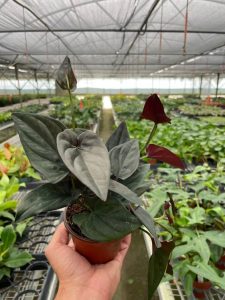
Syngonium Red Arrow
Caution and Care
It is important to note that, like many members of the Araceae family, Syngonium erythrophyllum is toxic if ingested. The plant contains calcium oxalate crystals that can cause irritation to the mouth, stomach, and skin, so it should be kept out of reach of pets and children. Additionally, it prefers moist soil and a high humidity environment, so it may require extra humidification measures during dry seasons
Tropical Origins
Syngonium Red Arrow, scientifically known as Syngonium erythrophyllum, is a tropical plant native to Central and South America, particularly thriving in the rainforests of Colombia and Panama. It belongs to the Araceae family, alongside other well-known plants such as the Zantedeschia (Calla Lily), Caladium (Angel Wing), and Monstera (Swiss Cheese Plant). This family is renowned for its diverse forms and rich leaf colors.
This plant’s ability to climb and trail makes it particularly suited for a variety of decorative applications. In indoor settings, it can be trained to climb a moss pole or allowed to gracefully drape from hanging baskets, creating a stunning visual effect. Its flexibility as a climber means it can be shaped and directed to fit almost any design scheme, whether as a standalone feature or as part of a larger green arrangement.
Outdoors, the Syngonium Red Arrow can be encouraged to climb trellises, fences, or even large trees, providing a vibrant, year-round display of color. In tropical and subtropical regions, where the climate is conducive to its growth, it can thrive as a ground cover or as a climber, adding a layer of greenery to garden landscapes.
Striking Foliage
The leaves of Syngonium Red Arrow are its most notable feature, which can change shape as the plant matures, starting from a heart shape to an arrow shape with a long point. The front of the leaves is usually a deep green, while the reverse side displays a rich reddish-brown, which is why it is called “Red Arrow.” This unique color combination and leaf shape make it very popular among plant enthusiasts.
Popularity Among Enthusiasts
Due to its unique leaf shape and captivating colors, Red Arrow Syngonium is highly favored by indoor plant enthusiasts. The variation in leaf color and shape makes it an ideal choice for any plant collection and can be featured in tropical landscapes as an outdoor plant. It is often displayed in hanging baskets, glass containers, or trained on trellises or poles.
Ornamental Splendor
The Red Arrow Syngonium is prized for its ornamental value, offering a lush, tropical accent to indoor spaces. It can be cultivated as part of an indoor plant collection, where it can be admired for its striking foliage。When placed outdoors in tropical landscapes, it contributes a vibrant, exotic element to the garden design. This plant’s air-purifying qualities are an added bonus, as it helps to remove pollutants from indoor air, enhancing the environment’s quality。
Versatile Placement
This adaptable plant can thrive in various room settings of an office or home, as long as the conditions are suitable. It prefers bright, indirect light, making it an excellent choice for spaces that receive plenty of natural illumination without harsh direct sunlight。The Red Arrow Syngonium can also be grown in hanging baskets or trained on trellises or poles, allowing its natural climbing habit to create a stunning vertical display。
Caution and Care
It is important to note that, like many members of the Araceae family, Syngonium erythrophyllum is toxic if ingested. The plant contains calcium oxalate crystals that can cause irritation to the mouth, stomach, and skin, so it should be kept out of reach of pets and children. Additionally, it prefers moist soil and a high humidity environment, so it may require extra humidification measures during dry seasons.





